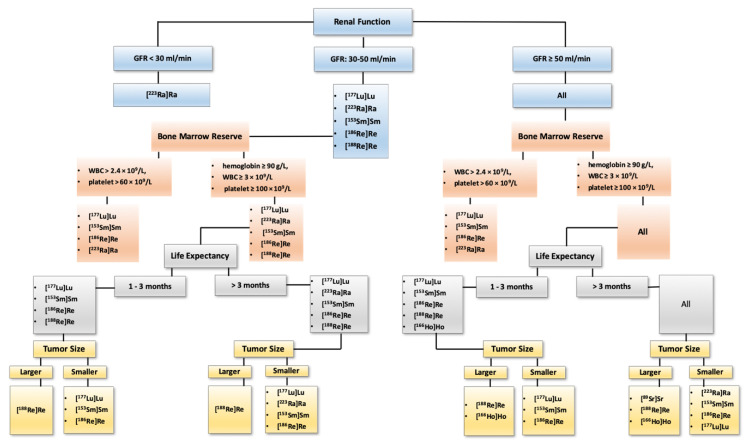Figure 4.
A proposed algorithm for selecting an appropriate radiopharmaceutical for bone-pain palliation therapy. Bone-pain palliation with radiopharmaceuticals is offered when the metastatic sites are widespread or not amenable to the local therapy. Prostate cancer with bone metastases accompanied with minimal lymph node metastases should be treated with [223Ra]RaCl. Those with concomitant visceral metastases should be considered for treatment with [177Lu]Lu–PSMA. Metastatic thyroid cancer, neuroendocrine tumors, pheochromocytomas and paragangliomas must be treated with associated targeted radiopharmaceuticals, namely [131I]Iodine, [177Lu]Lu/[90Y]Y-conjugated peptides and [131I]I-MIBG, respectively. For other malignancies with painful bone metastases the above algorithm is proposed. Noteworthy, only widely established agents are [223Ra]RaCl (for prostate cancer), [153Sm]Sm–EDTMP and [89Sr]SrCl. In conjunction with radiopharmaceuticals, other hormonal therapies (e.g., androgen deprivation therapy for prostate cancer, octreotide for neuroendocrine tumors, etc.) should be continued. Besides radiopharmaceuticals, concomitant use of bisphosphonates and denosumab, as well as other therapies should be considered in the context of trials. This proposed general approach is based on our personal experience; however, decision making should be based on local experiences, availability of the radioligands, national regulations and guidelines as well as reimbursement provided by health systems.

